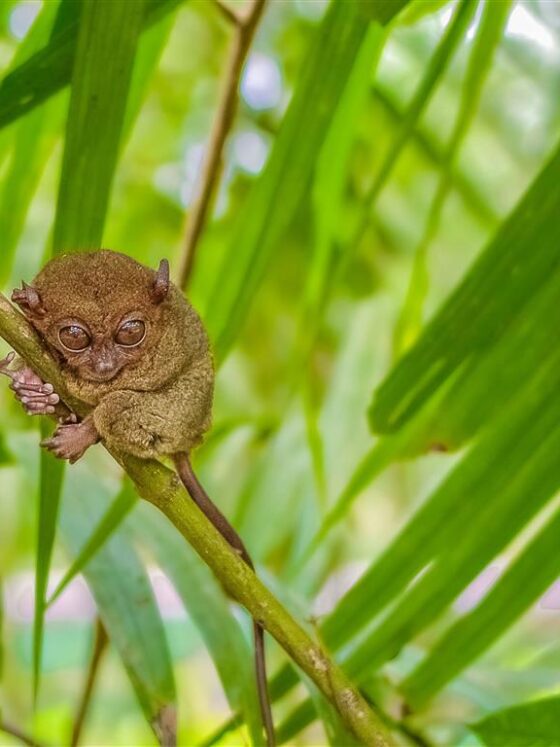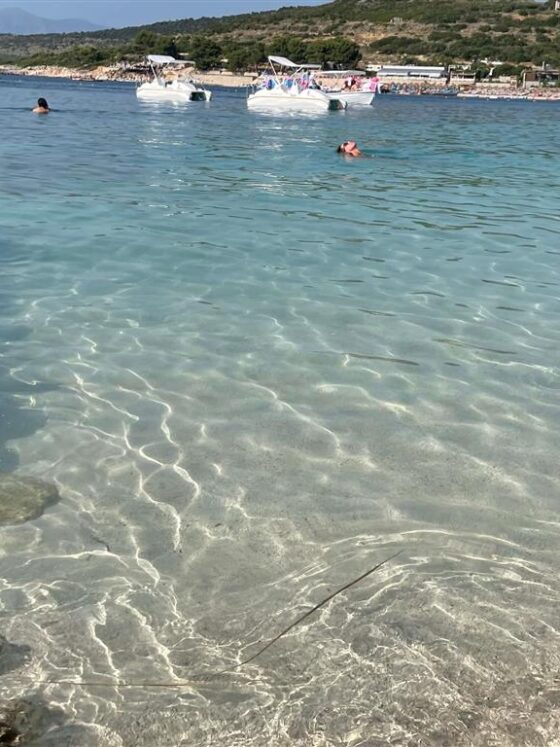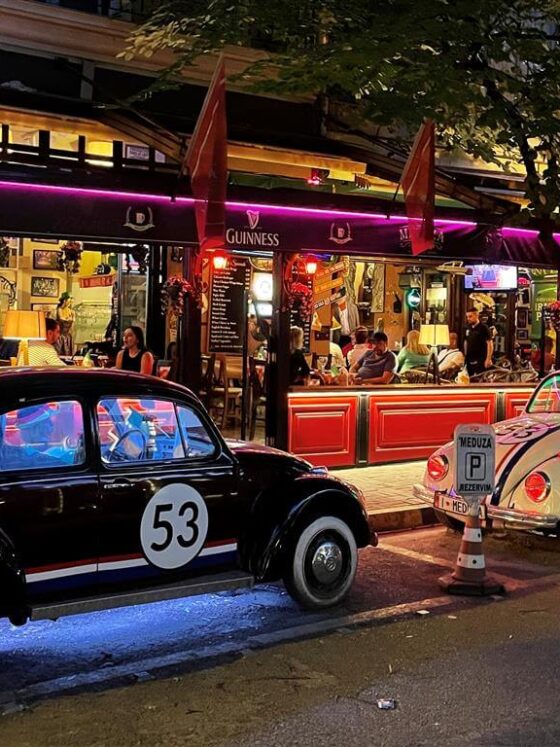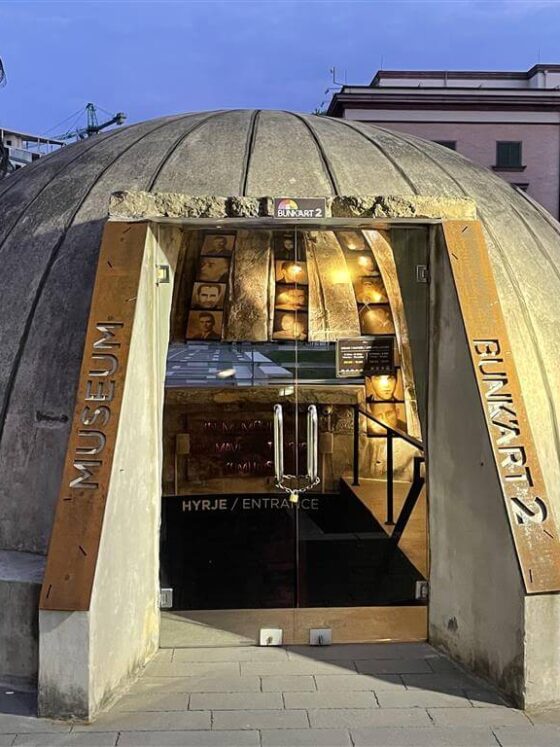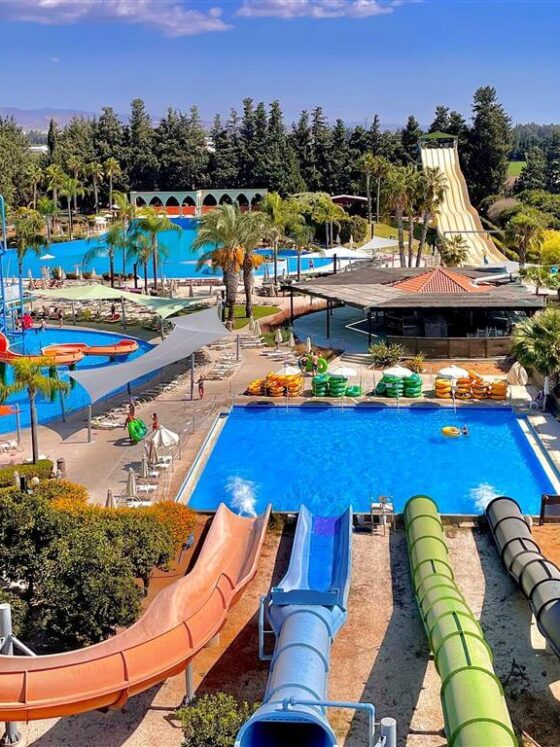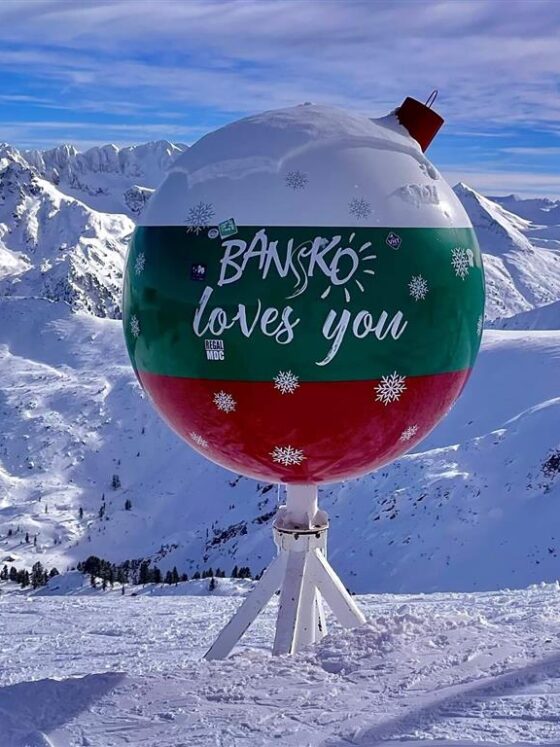*Updated 23/02/2025*
Whether you’re arriving in Bansko to learn to ski, you’re an intermediate skier who’s got a bit of experience on the slopes, or you’re at the top of your skiing game and can’t wait to get off-piste, the Bansko ski map won’t disappoint!
Whatever your level, it’s always helpful to know where to start, which runs to progress to as your confidence grows, or where to go to avoid the crowds (particularly, if like me, you find the scariest part of skiing the people!).
In this guide, you’ll learn all about the Bansko ski map and about the different runs from my perspective, as someone who has learnt to ski in Bansko, with input from Aaron who has skied in the Alps and is an advanced skier.
So if you’re heading to Bansko in Bulgaria for a ski holiday, download the Bansko piste map below and then have a read through our guide to the ski areas in Bansko to make the most of your trip!
Let’s take a look at the Bansko ski map to make the most of your time skiing in Bansko.
Bansko Ski Map and Runs
Unlike many other resorts, there are not many paper-piste maps in the Bansko resort. You can pick them up if you ask for them in some of the rental shops but generally, they are not used, probably due to the size of the resort.
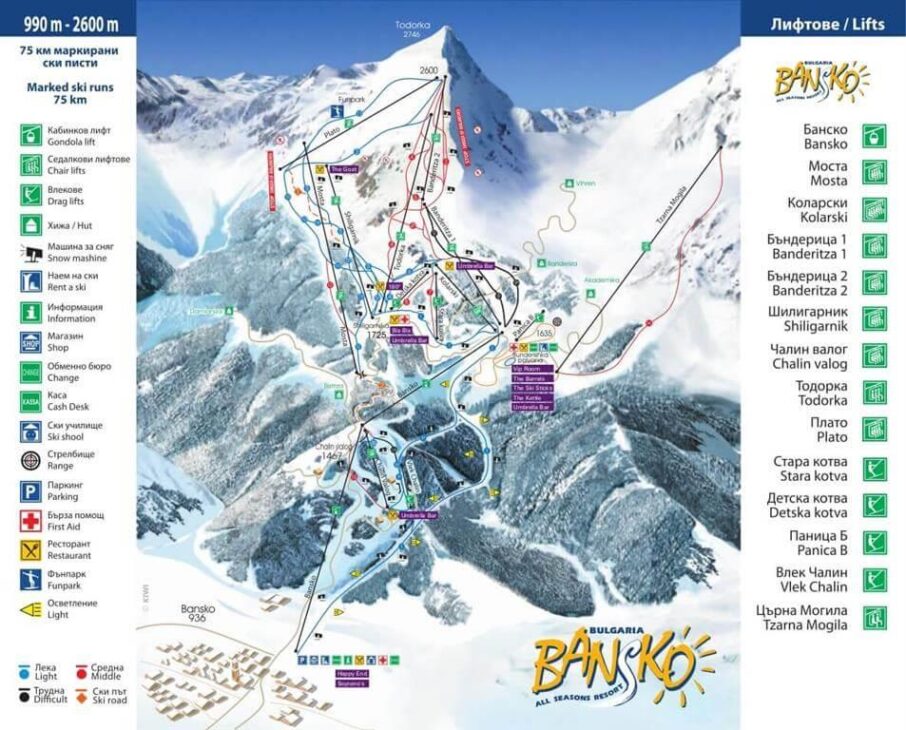
I would either suggest downloading a PDF version of the piste map for Bansko here or head to Piste Maps for other download options.
Equally, take a screenshot of the Bansko ski map above to save it to your phone. After a few days in Bansko, you will get to know the resort well enough without the map!
The Bansko ski map and the ski area are relatively small in comparison to ski resorts you’ll find in France which often have runs which connect different ski resorts so you can ski between them. As you can see from the Bansko ski map, the ski area is a standalone resort but it is quite a challenging one.
How large is the Bansko Ski Map Area
Bansko ski resort is made up of 75km of ski runs of which around 35% are for “beginners”, 40% for intermediate and 25% for advanced skiers.
The resort also has snow cannons located over 90% of the ski slopes shown on the Bansko ski map which makes it an attractive resort to visit as you don’t rely as heavily on the weather, which is becoming increasingly unpredictable. The 2024/25 season has been a great season for snow, but there was much less snow the previous seasons and the snow cannons have come to the rescue.
The Bansko Ski Map: Ski-in/Ski-out
There are no hotels located in the ski area at Bansko and so this is not a ski-in/ski-out resort.
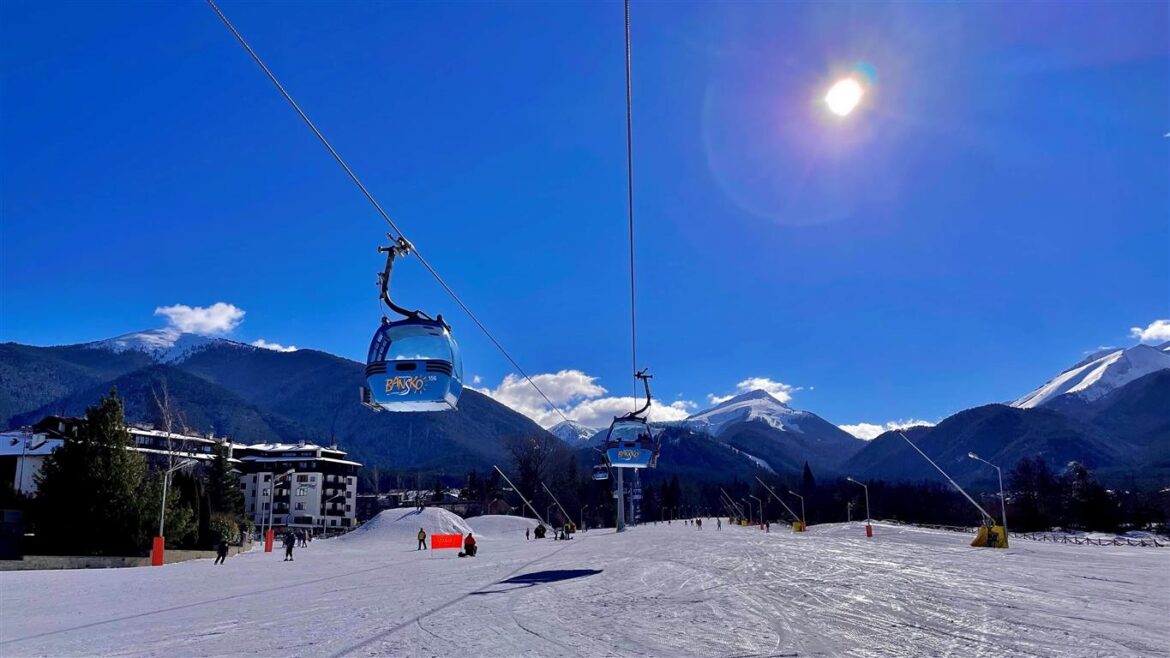
The Kempinski Hotel is probably the closest you come. It’s located on the ski road, so you can definitely ski in. Ski out consists of rejoining the ski road down to the bottom Gondola station (around 50 metres) and taking the Gondola back up.
You can read more about my favourite hotels in Bansko here.
As you may be able to see from the Bansko ski map, there is a ski road, which means (for those new to skiing), that you can ski all the way from the very top of the mountain, all the way back into town – you don’t need to take the gondola home!
The Gondola on the Bansko Ski Map area
The ‘Gondola’ is the main Bansko ski lift that takes you from town to the Bansko ski area. For anyone that has spent time in Italy, no fear, you will not be travelling to the ski area in a small narrow boat!
The Gondola and its 2 stations are shown on the Bansko ski map and is pretty quick, with a cabin arriving every 30 seconds. On average, it takes around 30 minutes to reach the last station, Banderitza Polyana, where the rest of the chair lifts are that take you further up the mountain and to the runs on the Bansko ski map.
However, before you arrive at the last station, you will arrive at the mid-station, Chalin Valog, which leads to three runs: 1 red and 2 blacks. You should only get off here if you are an intermediate skier, as on a clear day, it could be very intimidating to a beginner as you can see for miles!
How busy does the Gondola get?
Honestly? The Gondola up to the resort can be very busy. If you are skiing during the school holidays then unless you arrive at around 7.30-7.45 am, you can expect to queue for the Gondola for around 45 mins to 1 hour. During school holidays this could get close to 2 hours.
However, once you arrive at the last station, the queues for chairlifts aren’t too bad. Even in the school holidays, the largest queues are only around ten minutes long; nothing compared to the Alps I am reliably informed!
To avoid the queues at the Gondola, many people drive or arrange taxis to take them up to the last station or get in a shuttle bus (which is around 15 BGN (€7.50) for one way). Remember if you’re going to drive, you have to set off early as the road is closed after 7.30am.
EDIT: In February Half Term 2025, there were reports of people queuing at the gondola for 2 hours. It is LONG. Due to the UK half terms being spread over 2-3 weeks, February is the busiest time in Bansko for skiing. Mixed with the locals visiting at the weekend for skiing, the crowds are quite unbelievable. If you are visiting during this time, you might want to avoid the gondola OR get in the queue as early as possible.
How busy does the Bansko Ski Map get?
The blue runs on the Bansko ski map tend to get busy from around 9.30 am. The Kolarski lift, next to Banderitza Polyana (top/end station of the Gondola) leads to blue run 1, and you must go down this run to reach the majority of the other ski lifts that take you further up the mountain. These include Shiligarnika, Todorka and Mosta which are shown on the Bansko ski map.
As a result, blue run 1 can get very busy as it is the main access road in many ways. It is also a fairly narrow run (in comparison to some other blue runs shown on the Bansko ski map, so can be quite busy).
Generally, the blue runs are the busiest. Luckily, 10 and 5 are quite wide runs, so there is more room for skiers, but these are usually the most congested. Red and black runs are usually the quietest, and you can often get these to yourself, even in the middle of the day (again, the exception is in the school holidays!).
Quality of the pistes on the Bansko ski map
The condition of the pistes does depend on how much snow you’ve had even with the benefit of the snow cannons but generally, the best time to ski is in the morning, with the blue runs can become chopped up by early afternoon.
The red and black runs usually stay in good condition throughout the day due to fewer people skiing on them.
Want to know more about Bansko? Check out my other articles:
- My Complete Guide to Skiing in Bansko
- Bansko Ski Pass Prices 2022/23
- The Best Ski Rental in Bansko
- My Favourite Restaurants in Bansko
- My Top 10 Things to Do in Bansko in Winter
Bansko Ski Map: Best pistes for…
Here I give you my suggestions for which pistes to ski on the Bansko ski map depending on your ability.
If it is your first time in Bansko it may help you plan your first days in Bansko as you get to learn your way around the slopes!
Bansko Ski Map: Best for Beginners
We have been told many times, by intermediate skiers and who have skied in other resorts outside of Bulgaria, that Bansko is a tricky place to ski and their runs are more challenging than those in other resorts.
So to try and help you work out the Bansko ski map, I have tried to describe the various runs shown to help you plan your trip!
Here’s how I would rate the blue runs, in order of difficulty, and the order you should take them on if you are a complete beginner to skiing or snowboarding:
Nursery Slopes at Banderishka Polyana
You may have noticed that there are no green runs on the Bansko ski map, with the ski road probably being the closest to a green run that you’d get in other ski resorts.
But don’t worry! If you’re coming to Bansko to learn to ski, there is an area by the top station of the gondola, equipped with button lifts and travelators (for the kids!), which makes it a great area to practice without other skiers zooming past you!
Aaron taught me how to ski here, and it is where I learnt how to put my skis on, get used to getting around on the skis, practice my snow plough turns and also practice using the lifts. When I took my parallel ski lesson, this is where my instructor took me to practice first before progressing to the blue runs.
If you’ve skied before but not for some time, it can be a great place to quickly remind yourself and get your legs back in the game so you can head up the mountain feeling confident.
The Ski Road
Once you can comfortably stop and do your snow plough turns, I’d recommend heading back into town via the ski road!
This is marked by an orange dashed line on the Bansko ski map and numbered #1. Large sections of the ski slope are flat, but there are some steeper parts (but none that are any steeper than the nursery slope by Panica B button lift). It’ll get you used to ski for longer, and you’ll pick up a bit more speed which will help you improve the turns and get used to going faster.
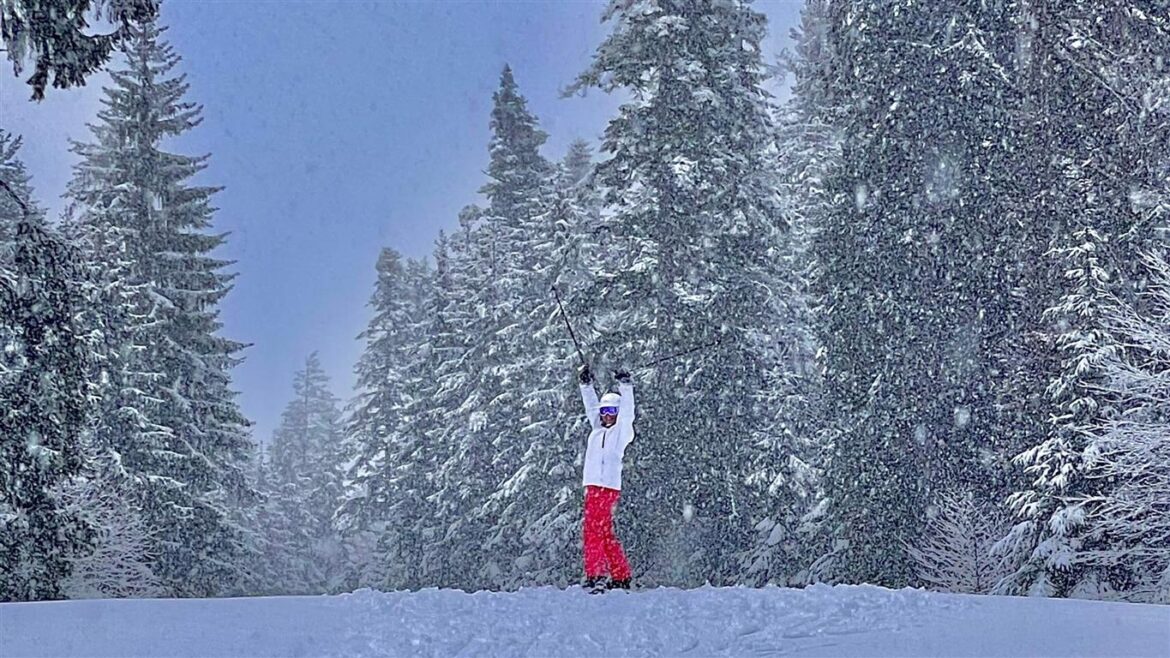
It also has the added bonus of taking you back to Bansko and to the après bars which is a good reward for completing this 10km run! As a result, however, it is busiest at lunch and at the end of the day when the majority of skiers head home. So if you want to use it to practice, I suggest doing so in the morning.
If you want to practice your technique on the ski raod but don’t want to head into town yet, you can always take the early turning and head to Chalin Valog and practice that little run, where there is a drag lift (see next section!) . If you want to head back to the resort, there is a chairlift at Chalin Valog that takes you up to the gondola halfway station too.
Chalin Valog 1
Once you’ve completed the ski road and you’re ready for your next challenge, take the turning off the ski road (marked as 1A in a dashed orange line on the Bansko ski map) and head toward Chalin Valog chair lift.
Here you’ll find blue run #16, and whilst largely this is fairly flat, there is a ‘steep’ bit in the middle which can help prepare you for your first proper blue. The steep section is only short, but it’s good to get used to turning on a steep slope.
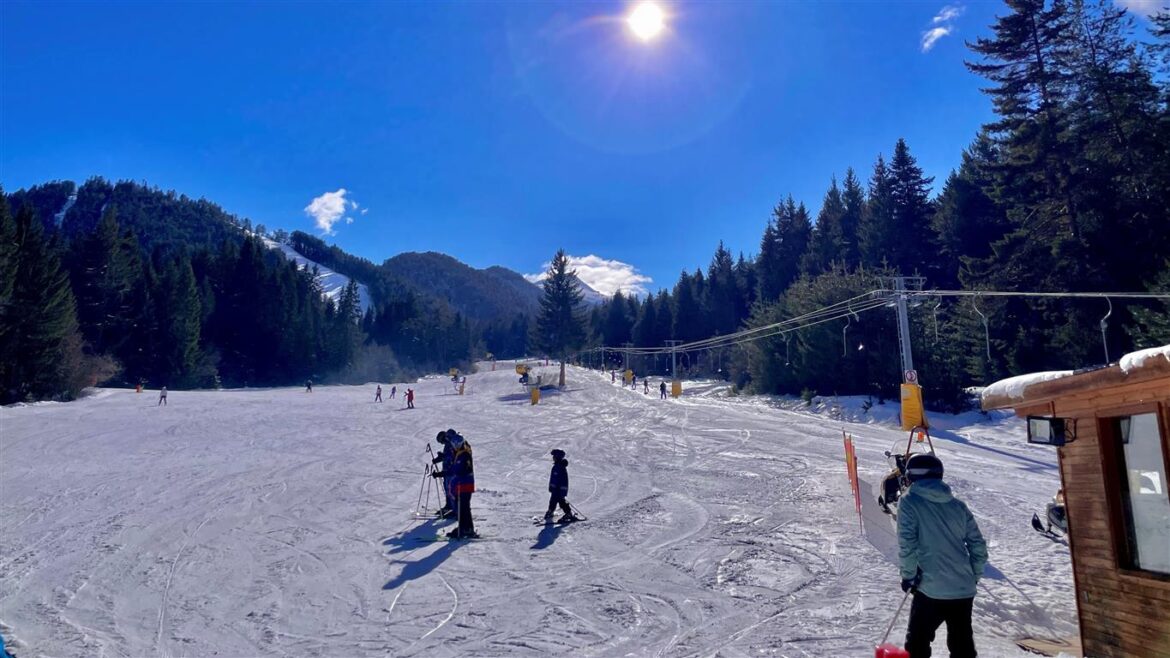
The slope itself is 2-3 times as long as the nursery blue slope at the top of the Gondola so is a good place to practice doing longer blue runs. There is a button lift here so you can go back up and try it as many times as you want until you feel confident doing so.
There is also a bar and food station here for you to take a rest when you have exhausted your ski legs! The bars are shown on the Bansko ski map.
Kolarski
Finally, to surpass your ‘beginner’ status as a skier or snowboarder, the final challenge will be heading up Kolarski to ski down blue run #1.
This is a bit of a step up to the other slopes, but by this point, you’ll have had plenty of practice doing your turns – you’ll 100% be able to do this!
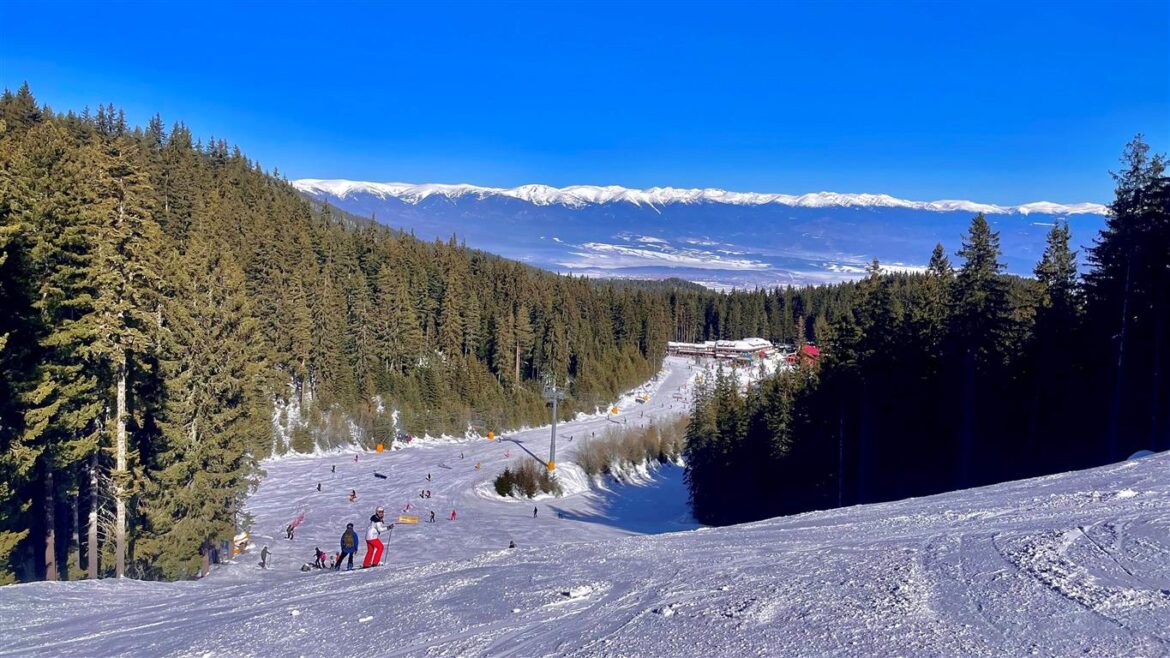
And once you’re able to do Kolarski, the rest of the Bansko ski map opens up because Kolarski leads to the majority of the other chair lifts!
In fact, this is the only chairlift from the Gondola which leads to blue runs and so you will find it is a popular lift and then a popular slope. Having said that, you rarely see much of a queue at this chairlift which always helps!
Bansko Ski Map: Best for Intermediate Skiers
For me, this is really where the fun starts. You’re feeling confident and you’ve got the whole of the Bansko ski map to explore and all these new fun challenges to face!
Once you’ve done Kolarski and you’re feeling the itch to move on, here is where I suggest you go.
Blue Run #10
Run #10 can be accessed directly from Shiligarnik lift. This chair lift is located halfway down run 1, just past 180 bar. Just head straight toward the bars as you’ve passed 180 and you will arrive at 2 chairlifts and a number of bars and restaurants.
From here you can catch Shiligarnik chairlift, which takes you up the mountain where you can tackle runs 10 and 5 but also connects you to the Plato lift, which takes you to the highest point on the Bansko ski map.
Run #10 is a wide blue which is a gradual decline, rather than being particularly steep. It’s quite a popular run, and you’ll see people having lessons on here, so expect the snow to get quite choppy here in the afternoon. I recommend run #10 as the next blue to take on after you have made it down Kolarski.
Strazhite to Mosta Chair Lift
Between the Shiligarnik and Todorka chairlifts is quite a steep hill which leads down to the end of Run #12 and in turn to the Mosta chairlift. The run is very flat, but the steep bit is good practice for the next run I suggest you try.
Mosta chairlift takes you up a little higher than Shiligarnik and provides access to runs #10 and #5. It can often be less busy as it’s further down the mountain and brings you out on the same side of the mountain as where the Plato chair lift is located, which is great if you’re heading all the way to the top.
Blue Run #5
Run 5 on the Bansko Ski map, whilst rated a blue, has a very steep part, which some people call “the wall” – not intimidating at all! This is a 300m section of the run which is more akin to a red run. That said, it is the only steep part on run #5, which is good practice to get you ready for red runs!
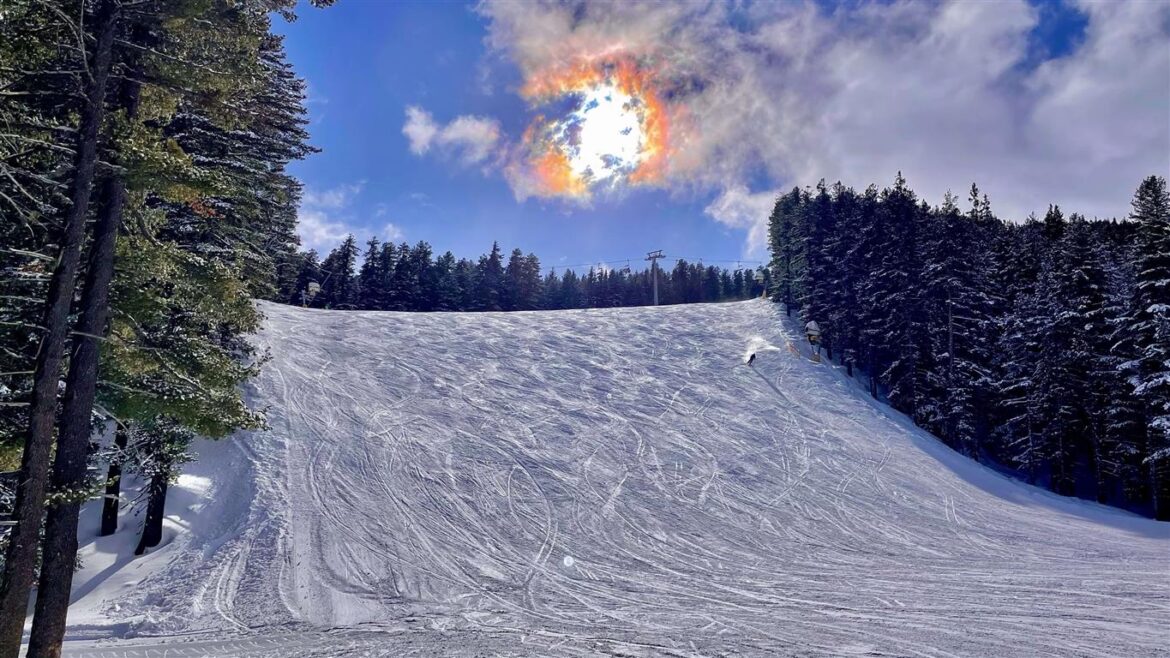
There is an ‘escape road’ to the right of the wall so if you come down run #5 and don’t fancy taking on the wall then you can head down the escape road which will take you over to run #10.
Runs 11 and 3 – Plato 1 and 2
First of all, whilst these runs look separate on the Bansko ski map, they are in fact parallel to each other and in effect are one run coming down either side of the Plato chairlift.
In terms of steepness, I would say that run #5 is far more challenging. However, Plato takes you to the top of the mountain which feels quite high and open as you are no longer protected and enclosed by the trees as you are on 5 and 10, so it’s a different experience.
It can also be quite windy at the top of the mountain. If it is windy when you get off the chairlift, be reassured that once you get say a quarter of the way down Plato the wind will stop because 99% of the time, it blows from the other side of the mountain!
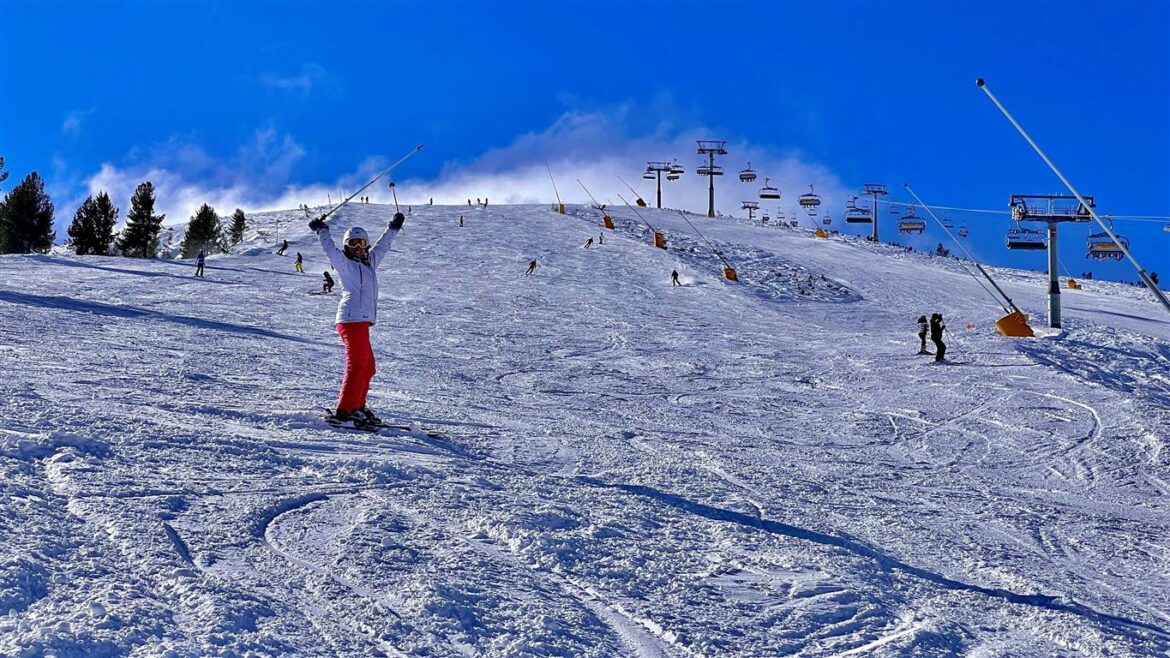
Because Plato is so wide, it’s great for intermediate skiers to experiment with speed without the fear of crashing into others (outside of half term where most runs are super busy!). It’s one of my favourite runs on the Bansko ski map! Also for advanced skiers, it is a great place to practice carving or to beat your top speed.
Red Run #15 at Chalin Valog
I’d suggest the first red run you try is Chalin Valog which you can get to by getting off the gondola at the mid-station and heading up the travelator.
Alternatively, if you’re already up the top of the mountain, head down the ski road marked 2 with an orange dashed line on the Bansko ski map (head to the Mosta chairlift and then ski off the back), and you’ll end up at the mid-station.
I would say the nerviest part of this run, is the fear that you will accidentally end up on a black run! Follow the signs to the Ski Road, and number #15 and you won’t go wrong.
This red run ends at the bar and food station on Chalin Valog that I mentioned earlier and there is a chairlift here to take you back to the top of this red run (or to the mid-station on the Gondola if you want to go back up the main resort).
Red Runs #7 and #8
These are two short runs which can be accessed at the back of the Kolarski lift. Run #8 finishes opposite Shiligarnika, where you can head back up via the chair lifts.
Run #7 joins blue run #1 where you have to ski back down to the Gondola station to get anywhere else. These are two short steep runs which are good for getting used to the gradient, without being too long.
They look obvious on the Bansko ski map but they are not that well sign-posted in practice. When you get off the Kolarski chairlift, instead of heading straight on with everyone else, go around the back of the chairlift and these two reds will become obvious!
Bansko Ski Map: Best for Advanced Skiers
Once you have conquered the runs above, it’s time to tackle some of the toughest pistes Bansko has to offer!
Red Runs #4, #2 and #6
This leaves you with the red runs on the right side of the mountain, as you look at the Bansko ski map.
In terms of difficulty, they are all much the same in terms of steepness as they all interlink! Once you’ve done one, you’ll absolutely be able to do the others.
Run #4 is where I started. These runs can be accessed from Plato, Todorka or Banderitza 2 chair lift, depending on how high up you want to start, and where you’re coming from, with Banderitza being the highest point, followed closely by Plato then Todorka.
These runs are often less busy than the blues, with #6 being the widest run so you have plenty of space and don’t need to worry about other skiers/boarders as much.
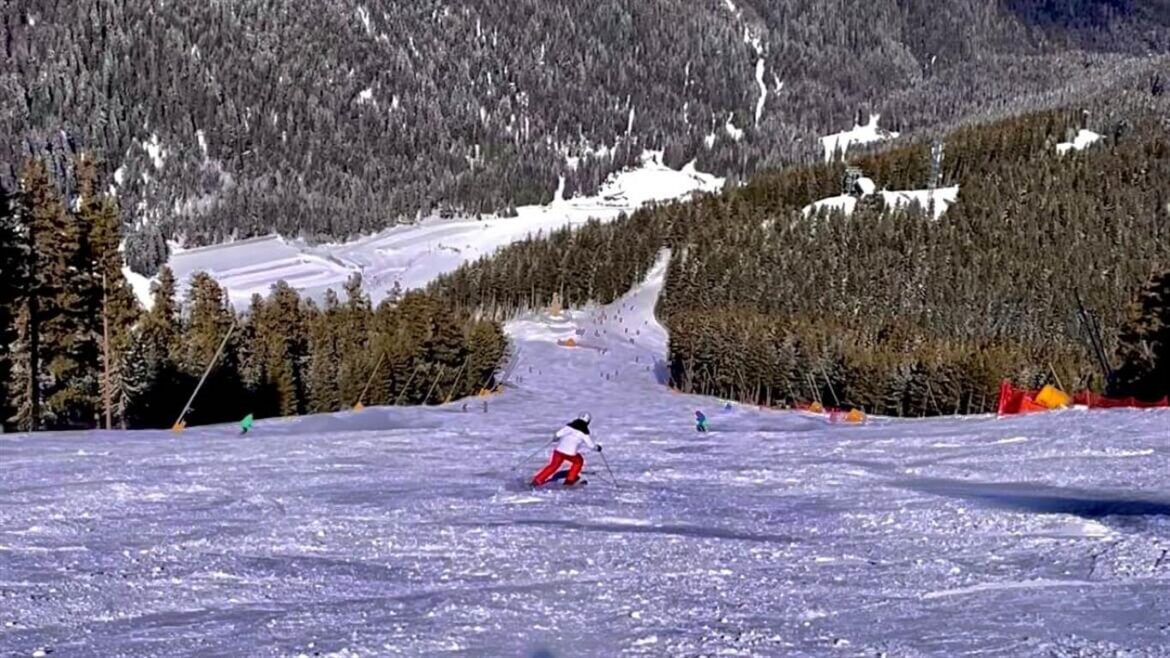
Run #4 is a good place to start as it leads you back down the 180 bar on Kolarski and so you can then continue onto the chairlifts at the bottom of Kolarski (Shiligarnik, Todorka and Mosta).
Run #6 is a good step up but, unless you fancy a black run, take care here to keep right. Left takes you down the black run, right lets you peel off at the top of Kolarski and re-join that run to head back to 180 bar.
Black runs – the final challenge!
There are a few challenging black runs, Tomba 1 & 2 (Runs #9 and #9A) on the Bansko ski map and those at Valog (Run #16 and a very small black section which leads from the mid-station chair lift which joins red run #15).
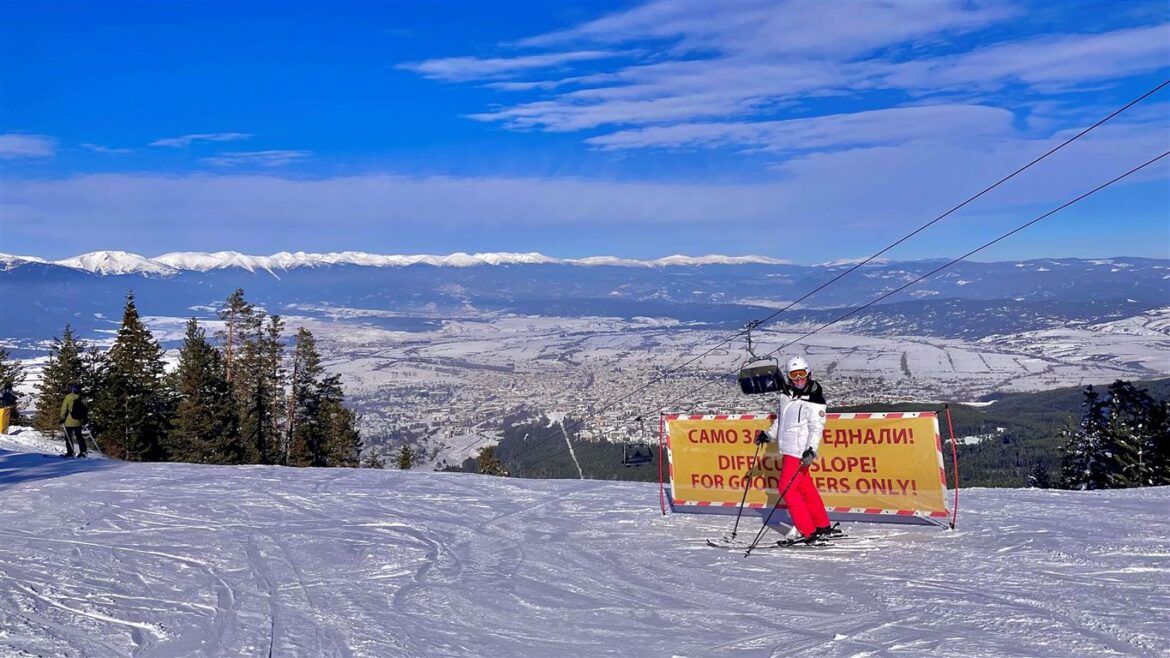
Both present challenges, with Valog being very open whereas Tomba is wide and steep and seems vast. Valog is much shorter though, so this is probably your best place to give it a go and see how you feel.
Off-Piste Skiing
If you want to explore the off-piste, there are lots of areas which skiers and snowboarders gravitate, to enjoy powdery snow and for a bit of a different type of challenge.
You’ll see signs all around the gondola station saying that off-piste skiing is forbidden and you must heed the avalanche warnings. Also bear in mind that your mountain rescue insurance is not valid off-piste.
However, if you are going to go off-piste (Aaron and I love it!), here are some good places to explore.
At the top of Plato, there is some great off-piste to the right of the pistes, on the ski park side.
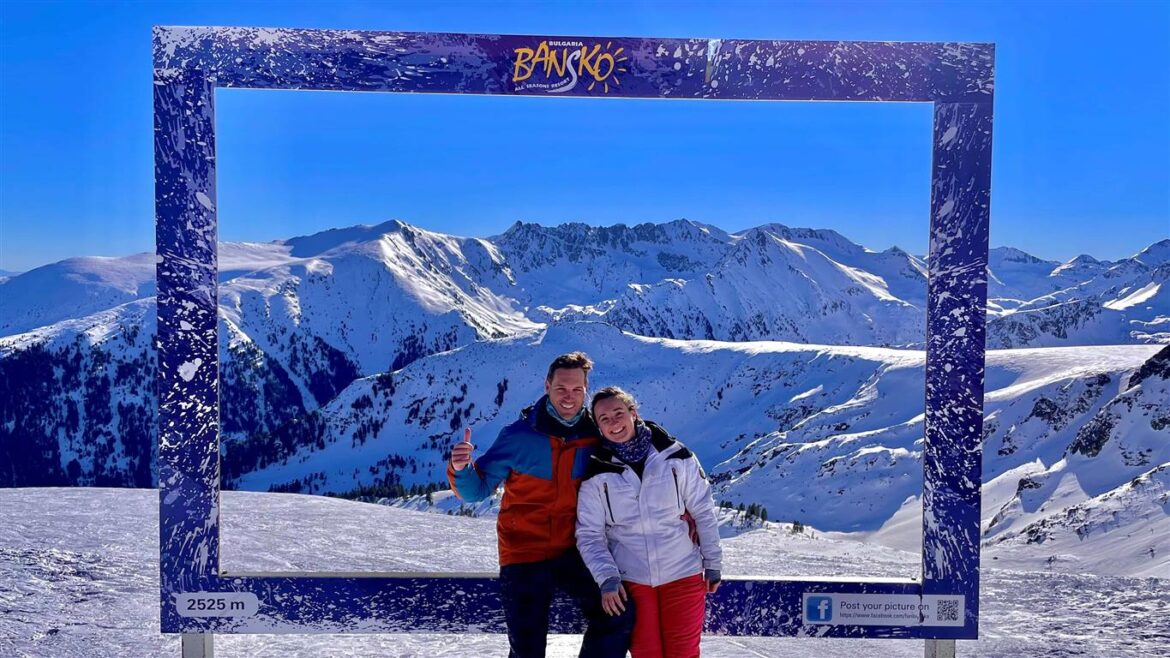
Get off the lift and ski to the right and head into the valle, following the tracks towards the small trees. You can’t get lost as there is bunting erected on the extreme right of the valley (as you head down) to keep you in bounds. Plato runs to the left and at the bottom, you will reach the top of Mosta chairlift.

The majority of the accessible off-piste is then around the existing pistes. Under the chairlifts at #5 and #10 are fun if the snow is fresh and there are plenty of cut-throughs on either side of #10 and #5 into the trees.
You can also head from Mosta through the trees (to the right as you get off the chairlift), down behind the Plato chairlift and keep going. Again, bunting will stop you from going too far off track and you will track run #10 from the treeline.
A great way to do some off-piste skiing is to go ski touring, where a guide will take you up the mountain and you’ll be able to enjoy the snow with no one around.
The Fun Park
If off-piste isn’t your thing, head to the fun park (located to the right of Plato 2, run 11, as you come down it) and practice your jumps!
There are rollers, kickers, a box jump and some rails, for you to practice or try to learn to jib!
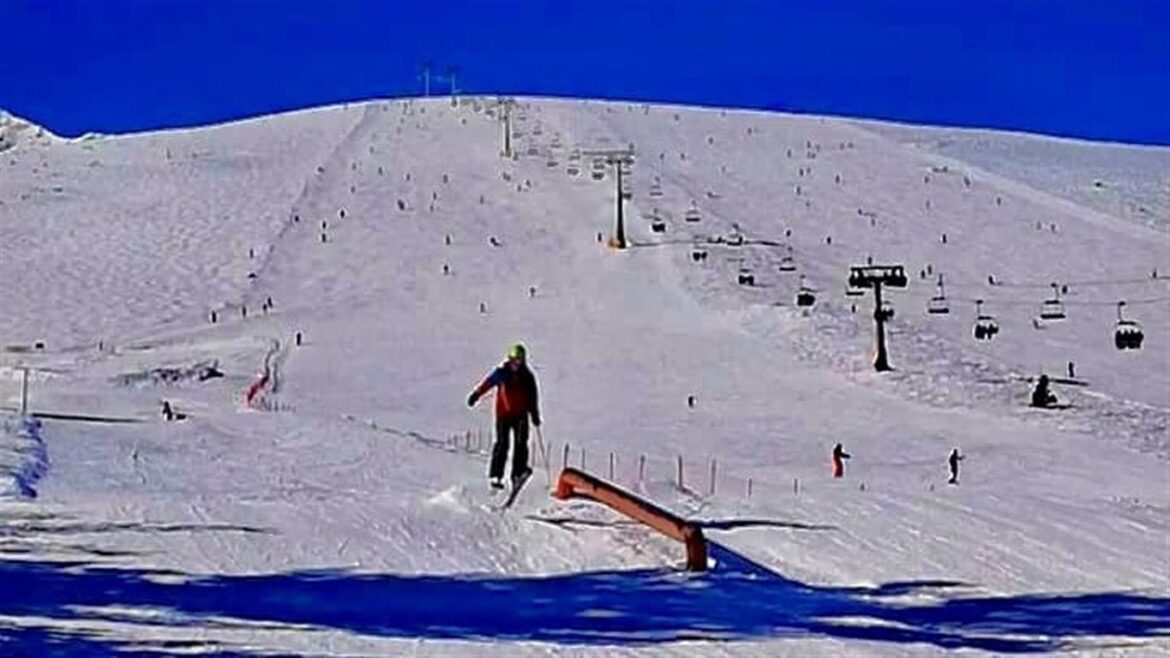
It’s not the most extensive park, but decent enough to have a laugh going over some mounds!
Conclusion
We hope that this is a helpful blog if you find yourself in Bansko and not sure where to start, or where you should go next.
The worst thing, whether you’re a skier or snowboarder is finding yourself at the top of a run you feel is too much for you. I hope this blog helps avoid this situation but remember – if it happens, don’t worry, you can always side slip down…I speak from experience!
If you are planning your trip out to Bansko then do check the snow report weather guides so you know what conditions to expect. You can read more about my recommended snow report websites in my guide to Skiing in Bansko.
If you’ve found this blog helpful, have any tips on tackling these runs or any insights on the Bansko ski map – pop them in the comments as we’d love to hear them!
Disclaimer: My blog contains affiliate links. If you buy something through these, I get a small commission at no additional cost to you. Thank you x

